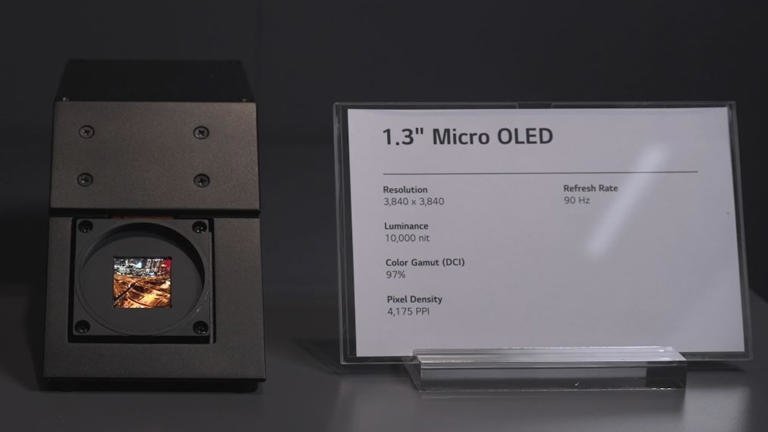LG Display showcased the future of OLED display technology at the annual SID Display Week 2024 event this week, unveiling a new micro-OLED panel that delivers an eye-searing 10,000 nits peak brightness.

According to WhatHiFi, the new technology is designed to power virtual reality headsets and smart watches, which means that it probably won’t find its way on consumer TVs anytime soon. However, they do showcase the potential for a much brighter generation of larger OLED displays at some point.
For now, LG Display’s super-bright OLED displays are about the same size as a 10 pence coin, but the intense brightness they deliver is far in excess of most consumer TVs available today. For instance, most Mini-LED Tvs on sale today tend to max out at around 2,000 nits of brightness, with a few exceptions such as the TCL XH11, which is said to deliver 6,500 nits. Moreover, the best OLED displays on the market today leverage LG’s new Micro Lens Array of MLA technology to hit around 3,000 nits.
LG Display said the MLA tech has been integrated into its coin-sized OLED displays, and this is likely the reason it was able to reach all the way up to 10,000 nits, OLED-INFO reported. MLA is currently in its second generation and can be found in new TVs such as the LG G4, Philips OLED909 and Panasonic Z95A.
It’s not clear if LG Display will attempt to create OLED TVs that can hit the same intense level of brightness. Currently, it’s said to be shooting for a brightness level of between 3,700 and 4,000 nits with next year’s 3rd Gen MLA OLED panels, which is a more modest improvement.
In case you’re wondering, nits is the display industry’s standard measurement for brightness, with one nit equivalent to the light generated by one candle per square metre.
Elsewhere at SID, LG Display showed off its latest MLA-based OLED panel, which will feature in the LG G4, as well as its most advanced OLED gaming displays. They’re said to combine the company’s META Multi-Booster tech with Detail Enhancer algorithms to reach around 3,000 nits of brightness, which is already a fairly impressive advance given that until just a couple of years ago, most OLED TVs struggled to go above even 1,000 nits.
The 27-inch QHD OLED gaming monitor on display was not only bright, but also extremely fast, boasting a blazing 480Hz refresh rate, the highest ever seen on an OLED display. The panel is a step down in terms of brightness as it doesn’t incorporate MLA, but we imagine that will change with future generations.
In addition, LG Display showcased a number of advanced automotive OLED displays at SID, which use a novel Tandem OLED architecture that involves stacking one OLED layer atop of another to increase the intensity of its brightness and improve durability. Apple’s new OLED iPad Pro model, announced last week, also uses the same display technology, so it’s likely that it will appear in many more devices in future.
For now it’s not clear if any of these enhanced brightness, response times and durability upgrades will find their way into future OLED televisions, but the announcements underscore LG Display’s relentless pursuit of OLED innovation.